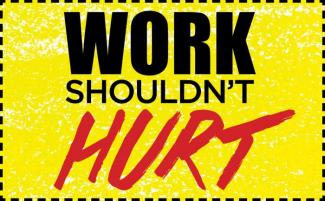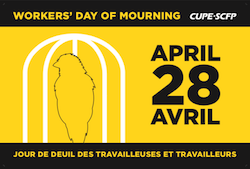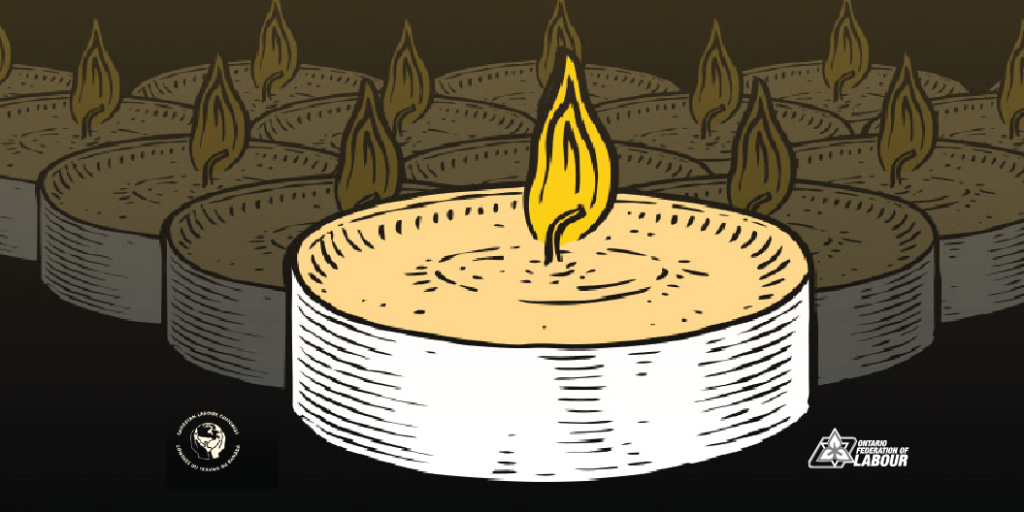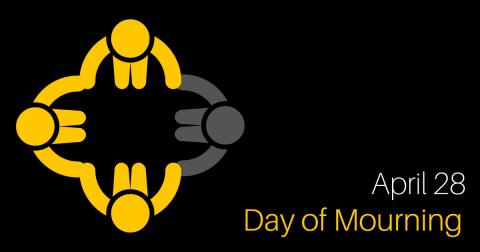CONTACT:
Leeann Foster, lfoster@usw.org, 412-225-5964
Jess Kamm Broomell, jkamm@usw.org, 412-562-2444
Workers in the pulp, paper, graphical and packaging sectors, represented globally by IndustriALL Global Union and UNI, are using this 2019 Workers Memorial Day to kick off a yearlong campaign around the three fundamental worker rights needed to make work safe: (1) The Right to Know – workers must know the hazards and risks in their workplace; (2) The Right to Act (commonly known as the Right to Refuse Unsafe Work Without Punishment); and (3) the Right to Participate in the programs and structures that manage safety in the workplace. Each of these Rights will be highlighted with action by workers across the global pulp, paper, graphical and packaging sectors.
May and June 2019 will focus on a Worker’s Right to Know. Right-to-Know laws typically focus on a worker’s right to know the hazardous substances and dangerous chemicals they work with, but workers require information on so much more that could endanger them at work. Workers require:
- Information on all workplace hazard information, including dangerous chemicals and materials but also hazardous tools, equipment, work processes and the way work is organized;
- An accurate evaluation of hazards. Where gaps in knowledge exist they should be filled;
- Hazard and risk assessment done with workers participation. The only people with the moral authority to assess a risk are those who must face it;
- This means industrial hygiene surveys belong to workers. Toxicology studies belong to workers. Ergonomic surveys belong to workers.
“We invite the global pulp, paper and packaging sectors to work with workers and their representatives to fully facilitate the right to know and, by doing so, build safer and healthier workplaces, “ said Joaquina Rodriguez, president of UNI Graphical and Packaging.
“All health and safety standards exist because of trade union action and we invite the pulp, paper, graphical and packaging industries to share information, build safety programs and provide a safeguarding course for their workers, “ said Leeann Foster, IndustriALL Pulp and Paper Working Group Co-Chair and Assistant to the International President at the United Steel, Paper and Forestry, Rubber, Manufacturing, Energy, Allied Industrial and Service Workers International Union (USW).
Similar international mobilizations will be conducted in September/October 2019 around the Right to Act and focusing March/April 2020 on the Right to Participate, culminating with Workers Memorial Day 2020.
Workers Memorial Day, observed by unions across the globe on April 28 of each year, is dedicated to remembering those who have suffered and died on the job and to renew the struggle for safe jobs. Worldwide, more than 380,000 workers die tragically at work each year, and another 2.4 million die from work-related illness.
The pulp, paper, graphical and packaging sectors are extremely dangerous, with a number of fatalities and even more life-altering injuries occurring across the globe annually. Transparency with workers on information relating to their health and safety and employer engagement with workers and their unions is fundamental to address loss of life and limb in the industry.
The two international unions, IndustriALL Global Union and UNI, bring together unions on all continents across these four industries. See more on the two global union websites: www.industriall-union.org and www.uniglobalunion.org.


 Every worker should be able to return home, at the end of the shift, healthy and safe.
Every worker should be able to return home, at the end of the shift, healthy and safe. April 28 is a Day of Mourning for thousands of Canadian workers killed or injured on the job each year, or who die from work-related diseases. On this day, we mourn, but it is also a time to insist that all levels of government do more to enforce existing health and safety laws and vigorously prosecute violations when a worker is killed or seriously injured.
April 28 is a Day of Mourning for thousands of Canadian workers killed or injured on the job each year, or who die from work-related diseases. On this day, we mourn, but it is also a time to insist that all levels of government do more to enforce existing health and safety laws and vigorously prosecute violations when a worker is killed or seriously injured.


